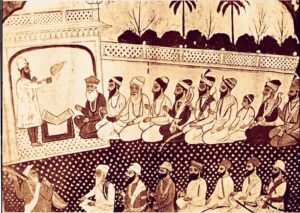
British Shimla: Society, Politics, and Culture
Shimla, the “Queen of the Hills,” was a significant center of British colonial power in India from the mid-19th to the early 20th century. Nestled in the Himalayas at an altitude of approximately 2,200 meters, this picturesque town evolved from an isolated village into the summer capital of British India.

Shimla’s role as a hub for political, social, and cultural life during British rule made it one of the most important cities in the Empire. In this detailed history, we will explore Shimla’s rise to prominence, the key officials who governed from here, and the unique blend of leisure, governance, and diplomacy that defined life in British Shimla.
1. Origins and Early History of Shimla
Before British annexation, Shimla was a remote and sparsely populated village in the Himalayan foothills, under the loose control of local rulers. The area came under British rule after the Anglo-Gorkha War of 1814–1816, following the Treaty of Sugauli in 1815.
The actual land that made up Shimla was purchased from local hill chiefs, specifically from Rana of Keonthal, a local ruler, around 1819. As word spread about Shimla’s cool climate and scenic beauty, it started attracting more British officials looking for a summer retreat.
The British first discovered Shimla’s potential due to its cool climate, which offered respite from the scorching heat of the Indian plains. In 1819, Lieutenant Ross, an assistant political agent, was the first to build a modest house in Shimla. The following construction of Kennedy House by Charles Pratt Kennedy in 1822 marked the beginning of the British establishment in Shimla. Word quickly spread about the town’s idyllic climate, and by the 1820s, Shimla began to attract British officials in increasing numbers.
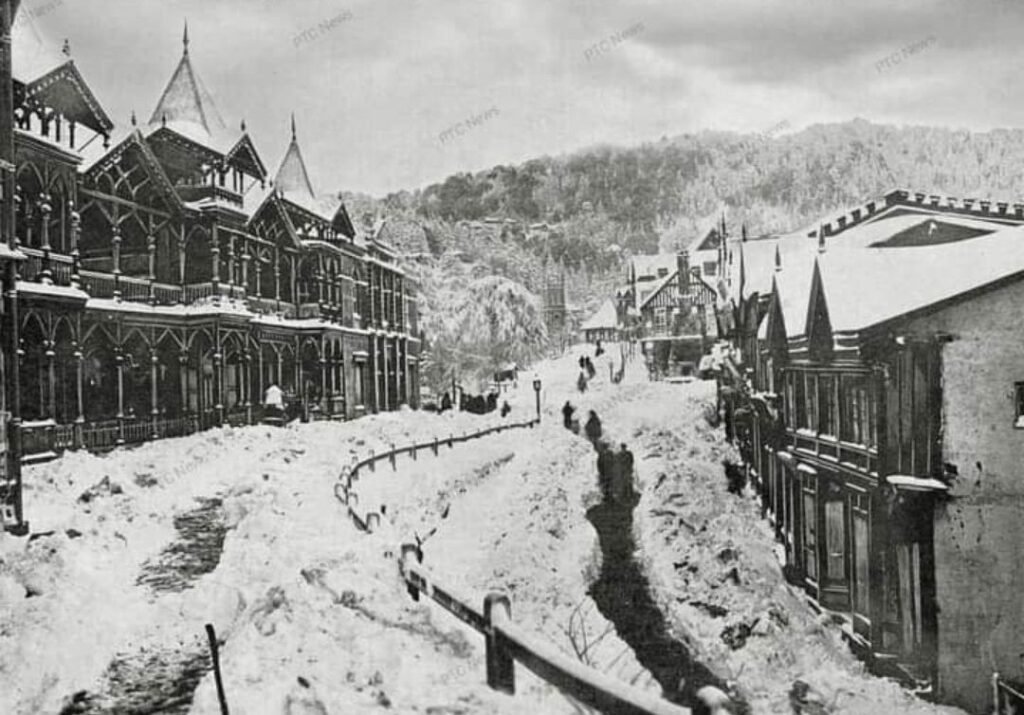
2. The Rise of Shimla: Queen Of Hills 1820s–1860s
Shimla’s evolution from a remote hill station to a center of British governance and social life began in the 1820s when British officials sought a retreat from the oppressive summer heat. In 1830, Lord William Bentinck, the Governor-General of India, visited Shimla and helped popularize the hill station among British elites. The British began developing basic infrastructure, constructing private homes, administrative offices, and roads.

- The British favored Shimla for its strategic location in the hills, providing an excellent vantage point over the surrounding territories.
- Its remoteness also allowed British officials to carry out confidential discussions away from the political noise of the Indian plains.
- The easy access to cool, mountain air and the beauty of the Himalayan landscape made Shimla not just a governmental retreat but also a center of British high society, where officers and their families lived lavishly during the summer months.

In 1864, Shimla was formally declared the summer capital of British India by Lord John Lawrence, the then Viceroy of India. The British administration would move to Shimla from March to October each year, bringing with it top government officials, military officers, and their families. This seasonal migration of the British government solidified Shimla’s political and social importance within the Empire.
3. The Summer Capital & The Heart of the British Empire (1864–1910s)

Once established as the summer capital, Shimla became the nerve center of the British administration during the hot months. By 1864, Shimla became the summer seat of the British administration, including judges, bureaucrats, and politicians, who continued their judicial and political activities from Shimla. From the majestic Viceregal Lodge, where the Viceroy resided, critical political, military, and diplomatic decisions were made. The town’s strategic location, cool climate, and scenic beauty provided the perfect backdrop for British officials to relax and govern.

Political and Military Administration
Shimla’s status as the summer capital meant that many of the most important decisions regarding British India were made here. The Viceroy of India—the highest-ranking official of the British government—conducted affairs of state from the Viceregal Lodge, and the British Indian Army’s high command operated from the nearby cantonments in Jutogh and Sabathu.
- Military Significance: Shimla’s location near the northwestern frontier made it a crucial site for overseeing British military strategy. Decisions related to frontier defense, particularly concerning the Second Anglo-Afghan War (1878–1880) and relations with Afghanistan, were made from Shimla.
- Diplomatic Role: Shimla also played a vital role in British diplomacy, particularly in relation to the Great Game—the strategic rivalry between Britain and Russia for control over Central Asia.

4. Key British Officials and Governors Who Ruled from Shimla
Many significant British Viceroys and Governors-General spent their summers in Shimla, ruling over India and making key political decisions. Here are some of the most notable figures who governed from Shimla:
- Lord John Lawrence (1864-1869): In 1863, John Lawrence, the Viceroy of India, decided to shift the summer capital of the British Raj to Shimla.

- Lord Lytton (1876–1880): Oversaw the Delhi Durbar of 1877, where Queen Victoria was proclaimed Empress of India. His tenure was also marked by the handling of the Great Famine of 1876–1878.

- Lord Ripon (1880–1884): Known for his progressive policies, Ripon introduced local self-government reforms, including the controversial Ilbert Bill, which allowed Indian judges to preside over cases involving British subjects. Much of the debate around this bill occurred in Shimla.

- Lord Dufferin (1884–1888): Managed the annexation of Upper Burma in 1886, a critical military and political decision taken during his time in Shimla.

- Lord Curzon (1899–1905): Perhaps the most famous Viceroy to reside in Shimla, Curzon is best known for his role in the controversial Partition of Bengal (1905), which had lasting political consequences for India.

- Lord Minto (1905–1910): Implemented the Morley-Minto Reforms, which expanded Indian representation in the legislative councils, signaling early moves towards Indian self-governance.

- Lord Hardinge (1910–1916): Lord Hardinge was responsible for the transfer of India’s capital from Calcutta to Delhi in 1911. Despite this, Shimla remained the summer capital.

- Lord Wavell (1943–1947): Organized the Simla Conference of 1945, an attempt to break the political deadlock between the Indian National Congress and the Muslim League over India’s future governance.
- Lord Mountbatten (1947): As the last Viceroy of India, Mountbatten held key discussions in Shimla regarding the Partition of India. He negotiated with leaders like Jawaharlal Nehru, Sardar Patel, and Muhammad Ali Jinnah on the future of the subcontinent.


5. Key Political and Military Decisions in Shimla
As a center for governance, Shimla was the site of numerous political and military decisions that shaped British India and the broader Empire.
The 1913 Shimla Conference
The 1913 Shimla Conference was a significant diplomatic meeting between British India, China, and Tibet. The primary agenda of the conference was to define Tibet’s political status and its boundaries with British India and China.

The conference ultimately led to the Simla Accord of 1914, which established the McMahon Line—a boundary between Tibet and British India. While Tibet and British India agreed, China rejected the accord, but the McMahon Line remains a critical demarcation in modern-day disputes between India and China.
Simla Conference (1945)
Organized by Lord Wavell, the Simla Conference was an attempt to resolve the political impasse between the Indian National Congress and the Muslim League on the question of Indian self-governance. The failure of the conference highlighted the growing tensions between Hindus and Muslims and set the stage for the eventual Partition of India.
Partition Discussions (1947)
Shimla was a key location for discussions leading to the Partition of India. Viceroy Lord Mountbatten held confidential meetings with Indian leaders at the Viceregal Lodge to negotiate the future division of the subcontinent, which eventually led to the creation of Pakistan.
Durand Line Negotiations (1893)
The Durand Line, which demarcates the border between British India and Afghanistan, was discussed and finalized in Shimla. This boundary, which still forms the modern border between Afghanistan and Pakistan, was crucial in British efforts to manage their empire’s northwest frontier.
6. Life in British Shimla: Society, Leisure, and Culture
Shimla was more than just an administrative capital; it was a lively social center where British officers, aristocrats, and their families enjoyed a vibrant social life. Shimla became synonymous with British high-society gossip, leisure, and culture.

Mall Road, Shimla
was constructed during British colonial rule to serve as a promenade and commercial hub. Built in the mid-19th century, it quickly became a social center for British officers and residents. Located just below The Ridge, it was designed to offer a space for leisurely walks and shopping. The name “Mall” is derived from the British term for a promenade and was commonly used for similar roads in British India.


Scandal Point
One of Shimla’s most famous social gathering spots, Scandal Point, is rumored to have been named after an elopement scandal involving a British woman and an Indian Maharaja. While the story may be apocryphal, Scandal Point remained a popular meeting place for British residents to exchange gossip and news.

United Services Club (US Club)
The United Services Club was the centerpiece of social life in Shimla, catering to British military personnel. Here, officers participated in sports like polo, golf, tennis, and cricket, reinforcing Shimla’s reputation as a place for both work and leisure. The club provided a venue for socializing, dining, and networking, further enhancing the exclusivity of British society in Shimla.

Annandale Ground:
A scenic plateau in Shimla, Annandale was the main venue for cricket matches, polo games, horse racing, and other sports. It was a popular spot for outdoor leisure activities.

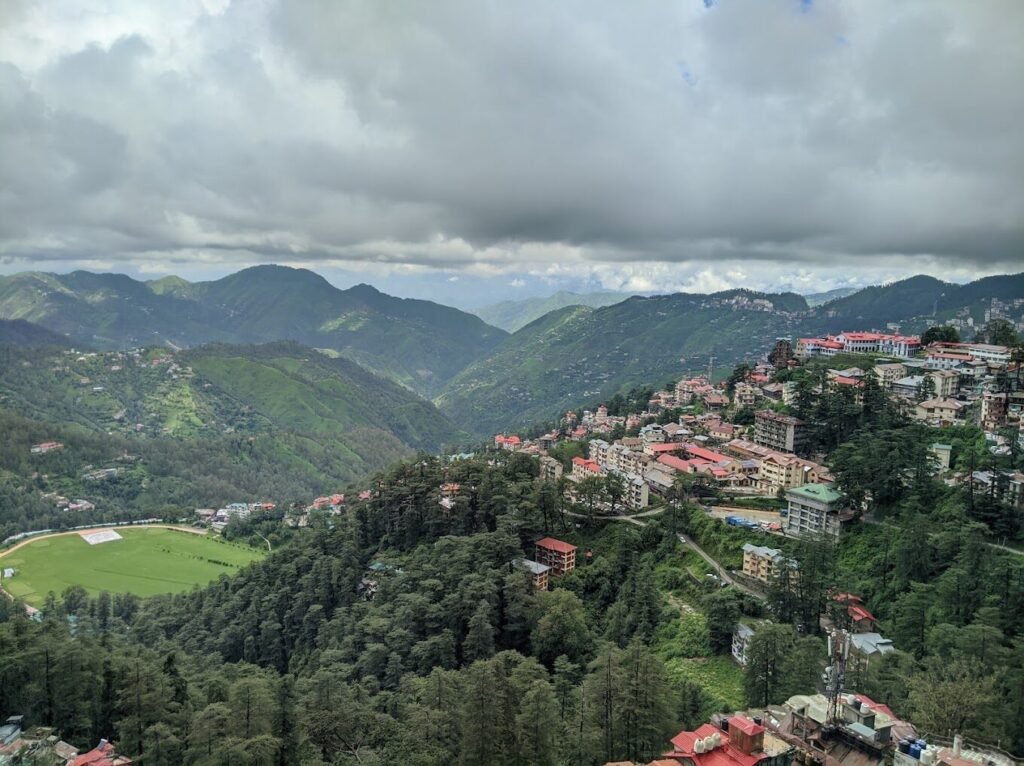
Ice Skating Rink (1920)
Established in 1920 initiated by Blessington, Shimla’s ice skating rink is the oldest natural ice rink in Asia. British officers and their families enjoyed skating during the winter months, making it a highly anticipated seasonal activity.

Gaiety Theatre (1887):
- Built in 1887, the Gaiety Theatre was Shimla’s cultural center, hosting plays, concerts, and dances. This five story building was amongst the tallest buildings of its times.
- Designed by Henry Irwin, it was a key venue for British entertainment and social gatherings.
- Built in stone, with artistically shaped windows, doors, lintels and openings, it also possessed boxes, galleries, beautiful paintings and sculptures, it was one of its kind in Asia during that period.

Prince of Wales Building (Regal Building):
- A symbol of Shimla’s cosmopolitan appeal during the British era, the Regal Building was a venue for theatre, gatherings, and parties, where the British aristocracy showcased their cultural dominance.
Naldehra Golf Course:
- Located 25 km from Shimla, Naldehra Golf Course was established in 1905 by Lord Curzon, the Viceroy of British India, who was so enamored with the area that he named his daughter Alexandra Naldehra Curzon.
- The course, designed by Colonel Mackenzie, is nestled among deodar forests and is India’s oldest golf course.
- Originally a 6-hole course, it was later expanded to 9 holes by Curzon himself. The par-68, 18-hole course remains one of the most challenging, retaining its natural landscape and layout for over a century.
- Curzon built a cottage nearby, which he used as a retreat, and introduced proper golfing etiquette, such as wearing specific attire and maintaining course standards.
- Over the years, the golf course became a popular destination for British officials and dignitaries.

Education in Shimla
Shimla was also an educational hub for the British elite, with several prestigious schools that catered to the children of British officials and Indian aristocrats.
- Bishop Cotton School (1859): One of the oldest boarding schools in Asia, founded by Bishop George Edward Lynch Cotton, serving British and elite Indian families.


- Auckland House School (1836 House) (1868-School): Built by Lord Auckland in 1836, the Governor-General of India. It served as his private residence and then became a prestigious institution for the daughters of British officers, known for providing elite education to girls.

- St. Edward’s School (1925): Another important school, offering education to British expatriates and Indian elites.
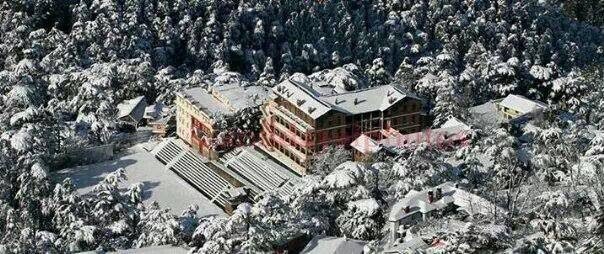
- St. Bede’s College (1904): Established as a women’s higher education institution, it catered to the daughters of British and Indian elites.
7. Architectural Legacy of British Shimla: Colonial Buildings and Institutions
Shimla’s status as the summer capital of British India led to the construction of several grand colonial buildings, which still define the city’s skyline. Shimla was not just a political center but also a hub of British social life, culture, education, and health services. Many of the buildings constructed during the British era still stand today, each telling a story of the town’s historical importance. These structures were not only functional but also symbolized the grandeur and authority of the British Empire.
The Viceregal Lodge
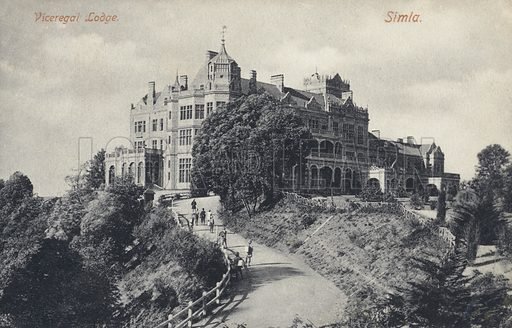
The Viceregal Lodge, completed in 1888, was the most important building in Shimla during British rule. Serving as the residence of the Viceroy of India, it became the hub of administrative activities during the summer.

The Lodge was a grand example of British colonial architecture, designed in the Jacobethan style. It housed critical meetings and conferences that determined the fate of British India. It was here that Lord Mountbatten and Indian leaders planned India’s future in the tumultuous months leading up to independence and partition.

Today, the Viceregal Lodge is known as the Indian Institute of Advanced Study, but during British rule, it was the center of power and political decisions for the Empire.
Barnes Court
Built in 1830 by the then Commander-in-Chief, Lord Edward Barns in the Tudor style as summer residence for British commanders, including Sir Edward Barner in 1932. It was later used as a residence for the Lieutenant Governor fo Punjab. During 1849-1864. it hosted various British Commanders-in-Chief, including General Anson, General Gomm, and General Campbell.


Railway Board Building (1896-1897)
A unique example of British-era engineering, was built in 1896-1897 by M/S Richardson and Cruddas, a Bombay-based firm. It replaced two old residences, Herbert House and Lowville, which had been rented out for government use before being demolished.

The building was constructed for Rs. 4,08,476, and designed with fire safety as a priority, using cast iron and steel to make the structure resistant to fire—an unusual architectural choice for the time. The building has four levels above the road, and its design includes three basements that climb down the hillside. Its fireproof design reflects the British Empire’s emphasis on safety in important administrative structures
Town Hall (1908)
Shimla Town Hall is a historic building in Shimla, India that’s been the center of municipal activities and a symbol of civic pride for over a century. Scottish architect James Ransome built the Town Hall between 1908 and 1910 in the Gothic style with half-timbered Tudor details, wooden frames, and shingled eaves.

Rothney Castle:
- Built in 1838 – Once the residence of Allan Octavian Hume, the founder of the Indian National Congress, this building sits on Jakhoo Hill and has immense historical value as one of the early colonial homes in Shimla. It housed his vast collection of Asiatic birds, later donated to the British Museum.

Rashtrapati Niwas (The Retreat Building), Shimla
- Built: Originally constructed by a Medical Superintendent of Simla (name unknown).
- Original Use: Initially leased by Lord William Hay and later by Sir William Mansfield. It became the summer retreat for the Viceroys in 1896.
- Current Use: Now serves as the official summer retreat for the President of India, where the president stays for at least two weeks during summer.
- Architecture: The building is a wooden structure with dhajji wall construction and covers 10,628 square feet.

Ellerslie House (Himachal Pradesh Secretariat)
- Built: 1886
- Architect: Designed by Lt. Colonel H.S. Abbott
- Original Use: Originally built for the Punjab Secretariat after dismantling the old Ellerslie House used by the Military Department. The new structure was approved in 1899 for government use.
- Materials: Constructed using stone quarried from Barnes Court (Raj Bhawan) and Sanjauli, with lime mortar.
- Structure: A 3-story building with 143 rooms for government offices, 31 rooms for public services, and additional refreshment rooms, along with a basement and sub-basement.

Gorton Castle, Shimla
- Built: 1901-1904
- Architect: Sir Winton Jacob
- Original Use: Constructed as the Civil Secretariat of the Imperial Government of India, it housed departments such as Land, Education, Health, and Finance.
- Architecture: A grand Neo-Gothic structure with a distinctive red-tiled roof and intricate stonework, reflecting British colonial style.
- Current Use: Now serves as the office of the Accountant General

Christ Church, Shimla
- Built: 1844-1857
- Architect: Colonel J.T. Boileau
- Original Use: Constructed to serve the Anglican British community in Shimla, formerly known as Simla.
- Architecture: Neo-Gothic style, with a prominent location on The Ridge, visible from kilometers around.
- Notable Features: The clock was donated by Colonel Dumbleton in 1860, and a pipe organ was installed in 1899. A porch was added in 1873.
- Historical Significance: Famous figures, such as Guy Gibson, leader of the 1943 Dambusters Raid, were christened here.
- Survival: The church has remained well-preserved through Indian independence and is still operational, though its clock no longer keeps time accurately.


Telegraph Office Shimla
The Telegraph Office in Shimla, designed by Scottish architect Scott Begg in 1922, is an iconic building on Mall Road. Constructed from red brick, the building stands out for its stately design and was made to be earthquake-proof, which was a significant architectural achievement for its time. It also housed one of the first fully-automated telegraph exchanges in India, with 2,000 working lines. The building played a crucial role in maintaining communications between Shimla and the rest of the British Empire.

General Post Office, Shimla
- Built: 1882
- Original Use: Constructed for the Director-General of the Post Office for British India, and also housed the Postmaster General of Punjab.
- Architectural Style: A unique blend of Alpine, Gothic, and Tudor styles, described as “Wild West Swiss.” The building is predominantly timber-framed with a tin roof and stone pillars, embodying English hill architecture.
- Historical Significance: The oldest post office in Northern India, it was formerly known as “Conny Cottage” before being purchased from Mr. Peterson.
- Notable Postmasters: Mr. F. Dalton (first) and Mr. L. G. Pigott (last before 1947).


Bantony Castle
- Built: 1830 (original cottage), rebuilt in 1880
- Original Use: Initially built by Captain A. Gordon, later became the summer residence of the Maharaja of Sirmaur. During WWII, it housed a prisoner communication center.

Woodville Palace, Shimla
- First Owner: William Rose Mansfield, Commander-in-Chief of the British Army, purchased it in 1866.
- Ownership History: Passed to Mrs. Henrietta Ruth Maria Alexander in 1876, and later to Mrs. Eliza Maria Walker. In 1926, Maharaja Sir Bhagvat Singh of Gondal purchased it and gifted it to Rani Leila Ba of Jubbal.
- Renovation: Raja Sir Bhagat Chand of Jubbal transformed the Victorian property into a summer palace in 1938.
- Current Use: Converted into a heritage hotel by his grandson, Raj Kumar Uday Singh, in 1977.

Other Notable Mentions
- Kennedy House: Built in 1822 First British residence in Shimla, built by Charles Pratt Kennedy, marking the start of Shimla’s development as a hill station.
- Lord Curzon’s House: One of the grandest private residences in Shimla, Lord Curzon’s house exemplified colonial luxury and power. It was in this house that the Partition of Bengal was planned and various military strategies were discussed.
- Ripon Hospital: The foundation stone of the Ripon Hospital was set by Viceroy of India, the Marquis of Ripon in 1882 and the hospital was opened for patients – both Europeans and Indian on 14 may 1885 by Lord Dufferin. Ripon Hospital symbolized the British efforts to establish a public health system in Shimla.

- Western Command Complex, now known as HQ ARTRAC: The main building was constructed between September 1882 and March 1885 after the property, originally owned by F Dalton, the Postmaster of Shimla, was acquired by the government following his death in 1857.


- The Will Hall: later known as Knockdrin (now the Officers Mess), was built in 1862 by General Butler and modified in 1868 by Captain Levinge. In 1906, it became the residence of the Foreign Secretary of the Government of India.
- St. Michael’s Cathedral: Built: 1885 – Roman Catholic cathedral built in a French Gothic style.

- Alderton, part of the Annandale View Estate and constructed in 1894, was originally owned by J Elston, director of the Alliance Bank of Shimla. It was acquired by the government in 1920 and now serves as the official residence of the Chief of Staff, HQ ARTRAC, still standing in its immaculate colonial style.

- Chislehurst, originally called Oakleigh, served as the Foreign Office during Lord Auckland’s governorship and was later purchased by Felix Von Goldstein in 1897, who transformed it into a timber-framed farmhouse-style cottage.
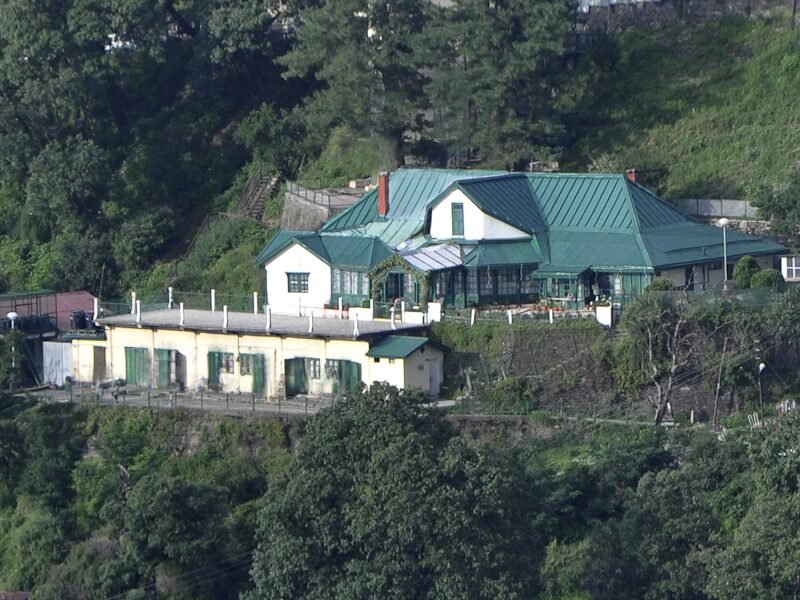
- Priory, near Snowdon, was built in 1858 by Captain Sunderland, RA, and later rented to Dr. WH Russell of the Times. After undergoing a facelift and housing notable residents like Prince Alexis Soltokoff and Sir Henry Smith, the villa now serves as the official residence of senior officials of the Indian Army.
- Cecil Hotel: Built in 1868 The Cecil’s origins lie in the Tendril Cottage, a one-story house where Rudyard Kipling is said to have written Plain Tales from the Hills. In 1902 The Hotzes expanded the Tendril Cottage and established the Cecil Hotel (famous luxury hotel for British elites)
- Lady Reading Hospital: Built during the early 1900s, this hospital was named after the wife of Lord Reading, the Viceroy of India. It was one of the key health facilities in Shimla, serving British officials and soldiers.
8. The Kalka-Shimla Railway: An Engineering Marvel
Completed in 1903, the Kalka-Shimla Railway was an engineering marvel that connected Shimla to the plains of India. The 96-kilometer railway, featuring over 100 tunnels and bridges, made the journey to Shimla faster and more comfortable, allowing British officials and their families to travel between Shimla and the plains with ease. Today, the Kalka-Shimla Railway is a UNESCO World Heritage site and remains a testament to British engineering prowess in India.

Continuing Legacy
Shimla’s role as the summer capital of British India made it one of the most significant cities in the British Empire. It was not only a center of governance and military strategy but also a vibrant social hub where British officials enjoyed a luxurious lifestyle amidst the beauty of the Himalayas. Shimla’s unique blend of politics, culture, and leisure left a lasting legacy, visible in its grand colonial architecture, schools, and the famous Kalka-Shimla Railway. Even today, Shimla’s colonial past remains etched in the town’s character, making it a fascinating reminder of the British Raj in India.



